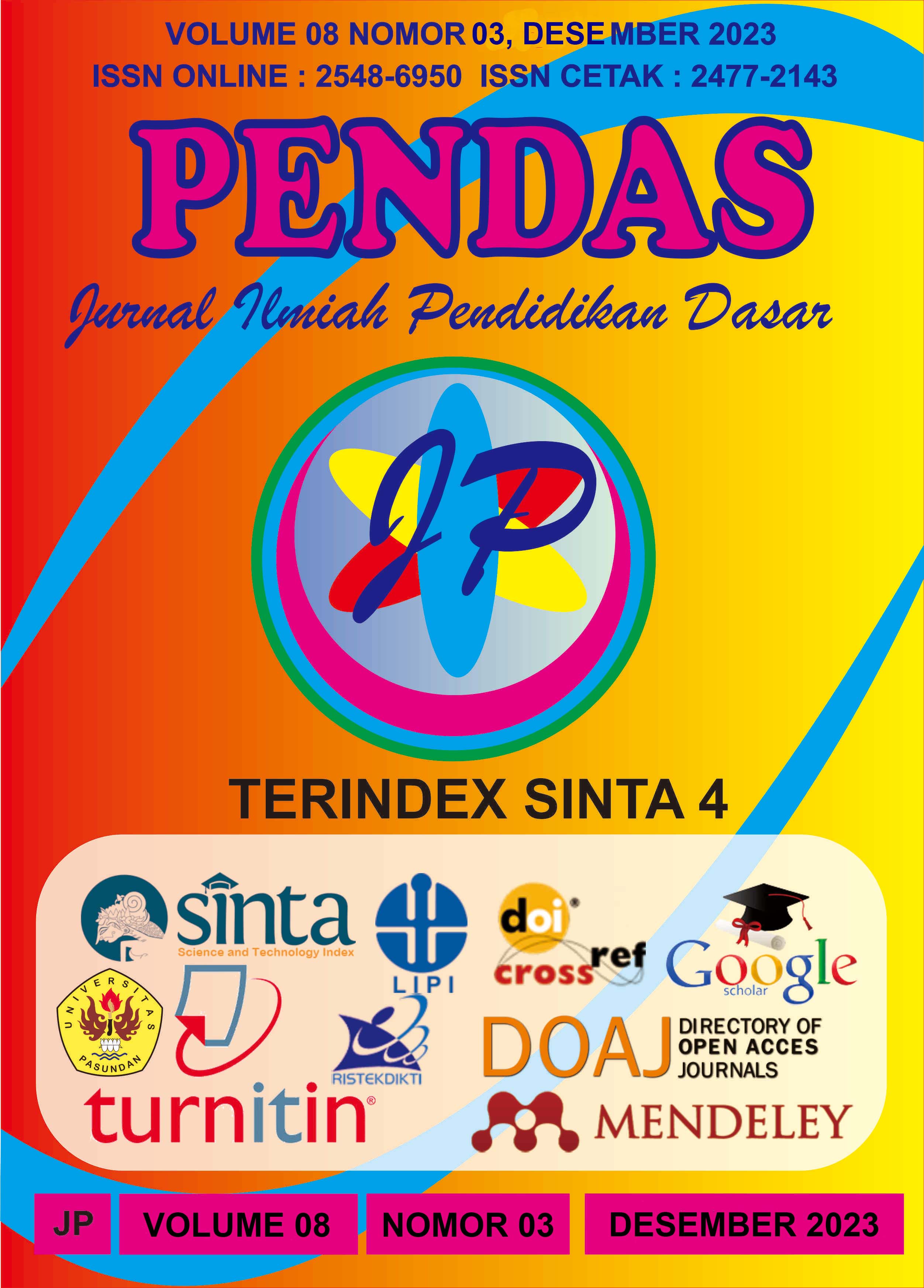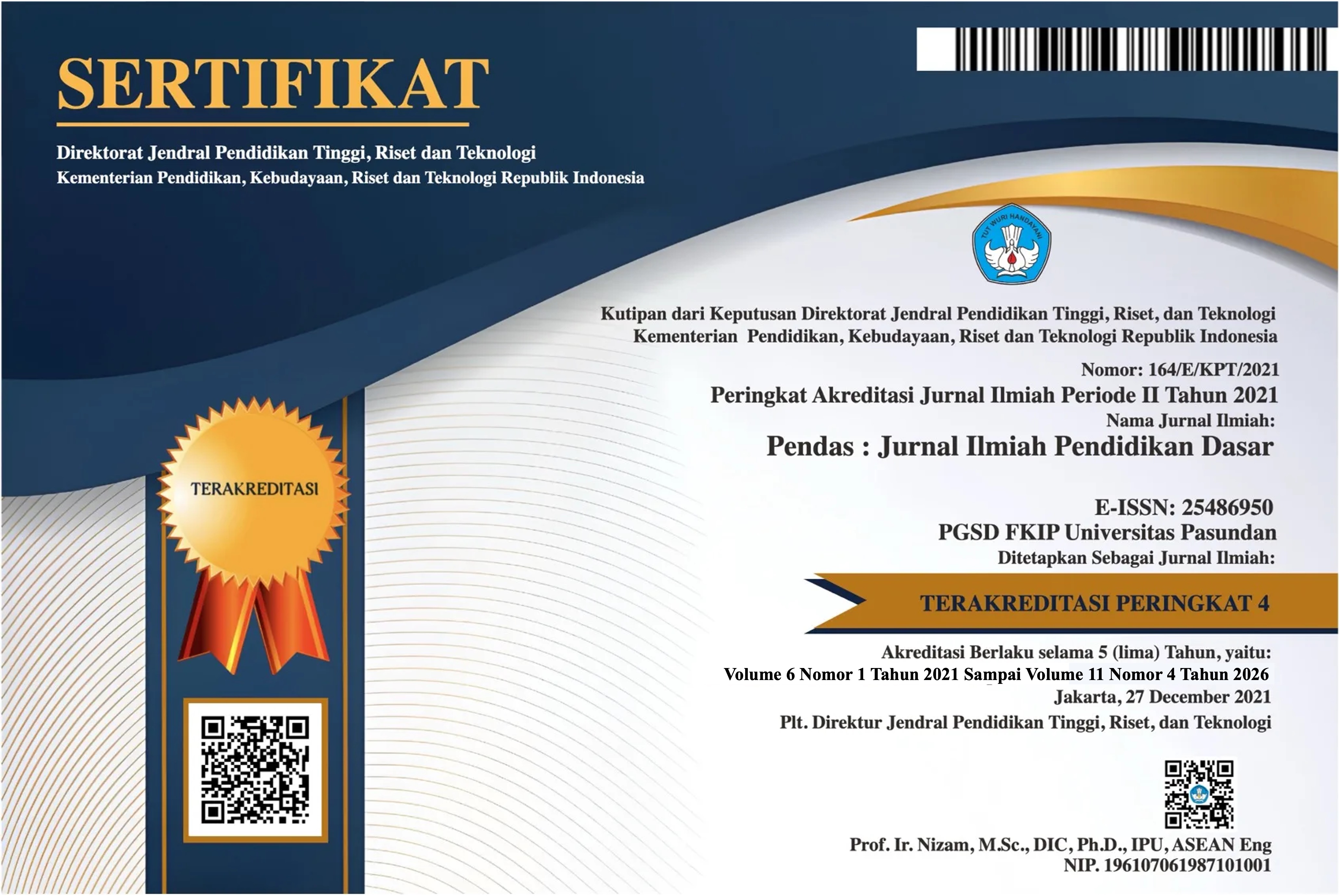LITERATURE REVIEW: STRATEGI GURU DALAM MENANGANI ANAK HIPERAKIF
DOI:
https://doi.org/10.23969/jp.v8i3.11698Keywords:
Literature review, strategy, hyperactive behaviorAbstract
Hyperactivity is a disorder experienced by children which is characterized by aggressive behavior, inability to calm down, impulsiveness, temper tantrums, difficulty concentrating, and likes to seek attention from other people." Hyperactive children must be treated as soon as possible to avoid problems around them. Examples of hyperactivity are often disturbing other friends, not wanting to be controlled, often leaving their seats during class, and often not completing the tasks they have done. Apart from that, hyperactive children include: having a high temper, often hurting other people, often leaving their seats during class, and being spoiled. These behaviors are caused by home or family environmental factors. Objectives (1) behavior of hyperactive children, (2) factors that cause hyperactive children, (3) efforts to overcome hyperactive children. Education, as a vital means of developing human resources, is a need that cannot be separated from human life in making the nation's life intelligent and forming skilled people. Schools as education providers have a responsibility to develop students' potential to become people of faith and piety and able to develop their knowledge. However, it can be found in elementary schools that there are students who have hyperactive behavior which tends to make it difficult for teachers to deal with them. Therefore, teachers are tasked with providing guidance to students who have hyperactive behavior, because these students' hyperactive behavior can certainly have an impact on disrupting the success of educational activities in the classroom. Method This article uses a literature review research method with reference sources from 15 previous research journals. Review: Journal search results found 15 journals that met the criteria for hyperactive children determined by researchers. Most of the research found used a cross sectional study design, but several studies also used case control and cohort study designs. Several different results were found in each study, but they still showed similarities, namely that there were still the same perceptions about hyperactive behavior in each study.Downloads
References
Abidin, M. (2023). Analysis of Hyperactive Child Behavior and Handling Efforts in Education. Al-Iltizam: Jurnal Pendidikan Agama Islam, 8(1), 25. https://doi.org/10.33477/alt.v8i1.4489
Guru, M., Membina, D., Kelas, S., Lebong, S. R., Tarbiyah, F., & Ilmu, D. A. N. (2020). Metode guru dalam membina siswa kelas v yang berperilaku hiperaktif di sd negeri 12 sukaraja rejang lebong.
Jariono, G., Fachezzy, F., Nugroho, H., Maslikah, U., Nurhidayat, N., Sudarmanto, E., & Triadi, C. (2021). Management Strategy for Hyperactive Behavior for Children with Special Needs Viewed from the Perspective of Teacher and Parents. Linguistica Antverpiensia, 3. https://hivt.be/linguistica/article/view/1735
McDougal, E., Tai, C., Stewart, T. M., Booth, J. N., & Rhodes, S. M. (2023). Understanding and Supporting Attention Deficit Hyperactivity Disorder (ADHD) in the Primary School Classroom: Perspectives of Children with ADHD and their Teachers. Journal of Autism and Developmental Disorders, 53(9), 3406–3421. https://doi.org/10.1007/s10803-022-05639-3
Muhaimin, M., Sholikhah, A., Rahma, H., Al Anan, M. Y., & Inaya, V. R. (2023). Penanganan Siswa Hiperaktif di Sekolah Dasar melalui Model Contextual Teaching Learning (CTL) Berbantuan Metode Self Instruction. Dawuh Guru: Jurnal Pendidikan MI/SD, 3(2), 169–180. https://doi.org/10.35878/guru.v3i2.811
Mumtaz, A. (2020). Efektivitas Contingency Management dalam Terapi Perilaku untuk Menurunkan Gejala Gangguan Pemusatan Perhatian dan Hiperaktif pada Anak Sekolah Dasar. Prophetic: Professional, Empathy, Islamic Counseling Journal, 3(1), 1–14.
Nurhidayat, Nurhidayat, Jariono, G., Sudarmanto, E., & Kurniawan, A. T. (2021). Teacher Strategy in Reducing Hyperactive Behavior of Children With Special Needs During Pandemic Covid-19 At Slbn Sukoharjo. International Journal of Economy, Education and Entrepreneuship, 1(1), 79–86.
Nurtajdida, L. (2020). Pengalaman Guru Dalam Menangani Anak Hiperaktif Di SD Swasta Al-Hidayah Medan. http://repository.uinsu.ac.id/10419/
Palupi, E. R. R., Utami, W., & Munfarida, A. I. (2023). Pengaruh Kombinasi Terapi Bermain Playdough Dan Origami Dalam Peningkatan Konsentrasi Belajar Pada Anak Hiperaktif. Jurnal Insan Cendekia, 10(3), 160–171. https://doi.org/10.35874/jic.v10i3.1229
Putri, D. N. A., Kandhyawati, A. A. A. S., & Kurniawan, C. D. (2019). Pola Asuh Pada Anak Dengan Gangguan Pemusatan Perhatian Dan Hiperaktivitas (Gpph) Di Rumah Sakit Umum Pusat Sanglah Denpasar. Jurnal Medika Udayana, 8(8), 1–7. https://ojs.unud.ac.id/index.php/eum
Rosilawati, Suhendar, & Sudrajat, A. (2019). Perilaku Hiperaktif Anak Disabilitas Mental (Studi Kasus Di SLB BC Kurnia Kersamanah , Garut Jawa Barat). Jurnal Ilmial Rehabilitasi Sosial, 01(1), 111–136.
Sean, S., Siyulan, J. R., Heriyanto, M. C., & Surilena. (2022). Nerve Stimulation: Sebuah Inovasi Terbaru sebagai Alternatif Pengobatan Gangguan Pemusatan Perhatian dan Hiperaktivitas. SCRIPTA SCORE Scientific Medical Journal, 4(1), 62–74. https://doi.org/10.32734/scripta.v4i1.8426
Septier, M., Peyre, H., Amsellem, F., Beggiato, A., Maruani, A., Poumeyreau, M., Amestoy, A., Scheid, I., Gaman, A., Bolognani, F., Honey, G., Bouquet, C., Ly-Le Moal, M., Bouvard, M., Leboyer, M., Bourgeron, T., & Delorme, R. (2019). Increased risk of ADHD in families with ASD. European Child and Adolescent Psychiatry, 28(2), 281–288. https://doi.org/10.1007/s00787-018-1206-0
Trisna, E. L., Fajrin, R., & Ana, R. (2023). Studi Kasus Perilaku Anak Hiperaktif Di SDN 3 Sukoharjo Kecamatan Bandung Kabupaten Tulungagung. 2(4), 289–297.
Yahya, M. A., & Abdullah, M. F. (2020). Sport inclusion intervention towards attention deficit/hyperactivity disorder [ADHD] student. Asia Pacific Journal of Educators and Education, 35(2), 131–143. https://doi.org/10.21315/apjee2020.35.2.8
(Abidin, 2023)(Guru et al., 2020)
(Septier et al., 2019)
Downloads
Published
Issue
Section
License
Copyright (c) 2023 Pendas : Jurnal Ilmiah Pendidikan Dasar

This work is licensed under a Creative Commons Attribution 4.0 International License.



















